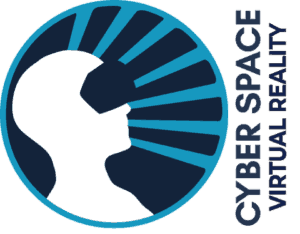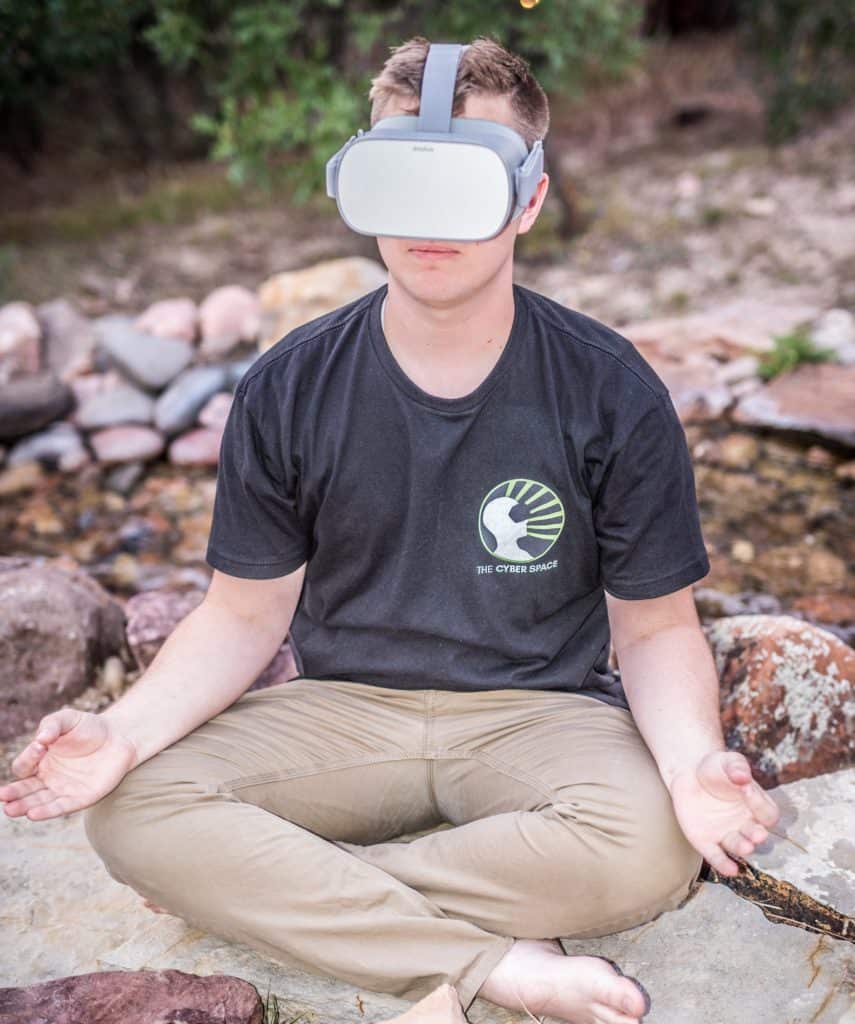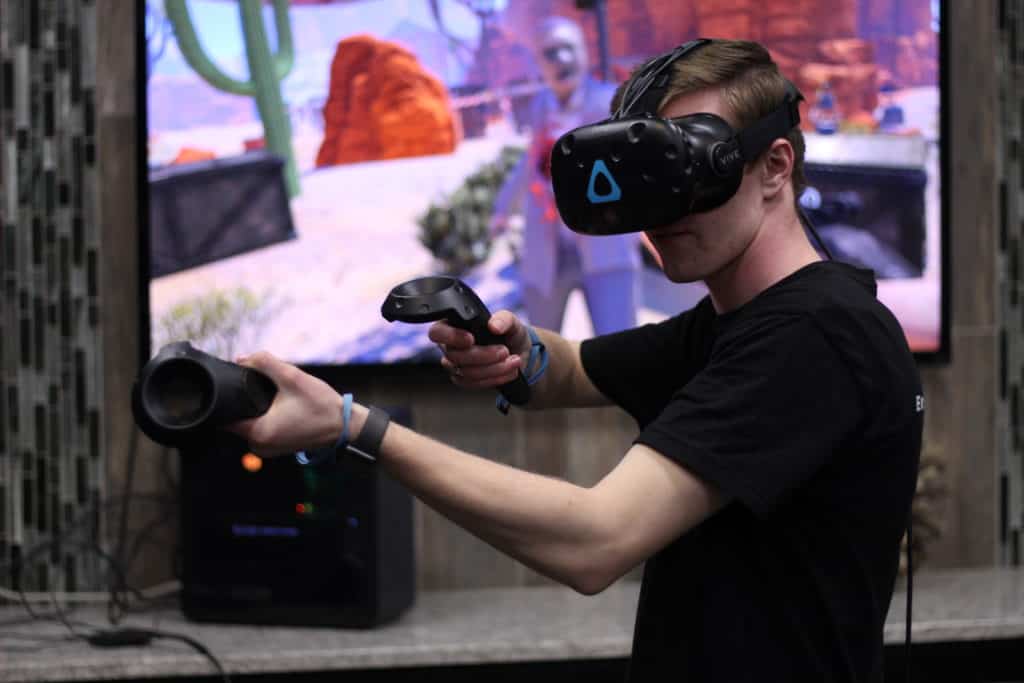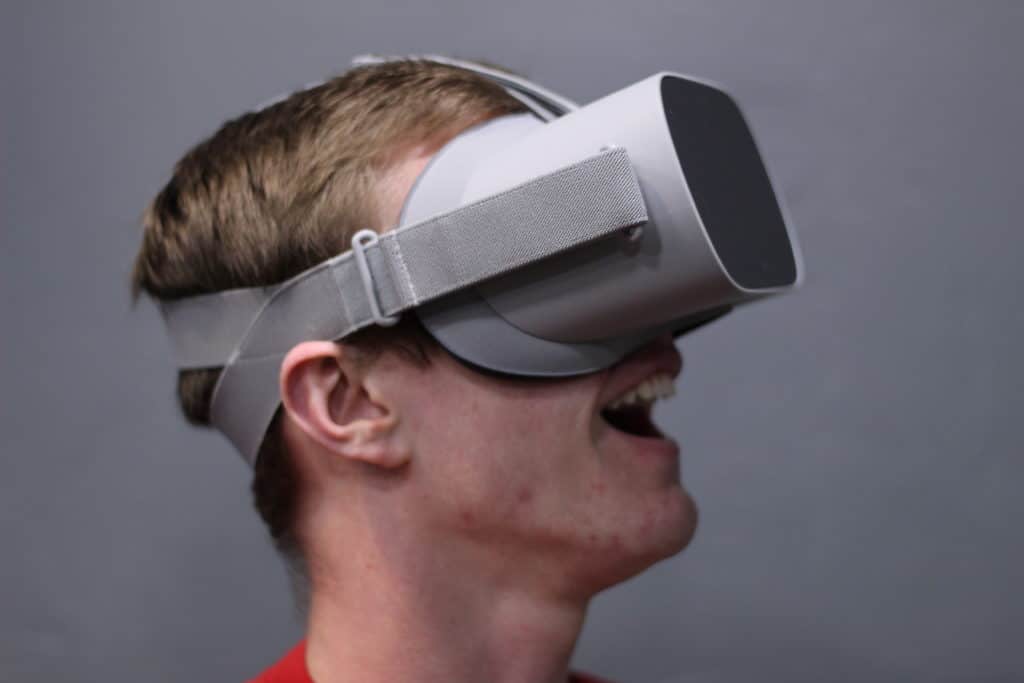Virtual Reality has been taking the world by storm on many different fronts. One of the most interesting fields virtual reality has begun to recreate is therapy.
Therapy is defined as any kind of treatment designed with the intention to heal or alleviate the effects of a disorder or other ailment. Virtual reality can be used for many different kinds of therapy, whether this is social, mental, or even physical!
If you or a loved one suffer from mental illness, chronic pain, or any other type of disorder and other treatments such as medication are not meeting your needs, virtual reality could be the answer you are searching for! The technology for virtual reality therapy has done nothing but grow since its creation and it will only continue to do so. Keep reading to learn more about virtual reality and its new role in the field of health care!
Mental Health Therapy
Mental health is a serious matter that has become a large subject of focus for recent conversations.
A mental health disorder can be caused by many different things. For example, there may be aspects of one’s physical, social, or mental habits that could contribute to one’s mental health.
The reality of mental illness is that it affects more people than many of us realize. As of 2019, it was found that 1 in 25 adults living in the United States experience some form of mental illness and 17% of youth struggle with a mental health disorder. Another startling statistic is that 80% of said effected people do not receive the care needed for them to get better.
Content courtesy of National Alliance on Mental Illness and TEDx Talks.
There are a variety of therapy methods that one can use virtual reality to treat their mental health illness. Below let’s take a closer look at how virtual reality can help treat the many different types of mental illnesses.
hospice care (bucket lists) doctors (destressing between patients)
Virtual Reality for Meditation
Virtual Reality allows one to escape their current reality and place themselves in new surroundings. This technology can be used to enhance one’s meditation sessions or simply to break free from one’s current circumstances.
Meditation is the practice of deep thinking or relaxation. While it is commonly used in some religious practices, meditation can also be useful for helping with many different mental ailments.
By meditating one is able to reduce stress levels, calm anxieties, become more self-aware, reduce the loss of memory, and even increase one’s metabolism.
Virtual Reality for Anxiety
While there are many different kinds of anxiety one may be experiencing, anxiety is generally understood as feelings of worry, nervousness, or unease.
While feeling nervous or worry is a normal human trait, an anxiety disorder leaves one feeling extreme amounts of worry or uneasiness in day to day situations.
Virtual reality has several different methods in order to deal with the different types of anxiety one may face.
Social Anxiety
For many, entering a social atmosphere full of strangers and new experiences can lead to intense feelings of anxiety.
One unique method dealing with social anxiety is known as “body-swapping.”
Body swapping allows a patient to counseling themself. While this may seem a bit of an impossible task to achieve, virtual reality makes it a relatively easy task.
First, patients start by describing their anxieties with their own therapist. Once in virtual reality, the patient is placed on the opposite side of the desk. They watch and listen to an avatar repeat back their own statements.
It then becomes the task of the patient to counseling the avatar through their own problems.
After sharing their opinion with the avatar, they go back to the patient’s chair and a therapist shares with them the very techniques they had shared earlier.
This brings listen to your own advice to a whole new level!
The boy swapping method is really only effective in patients who have previously been educated on coping mechanisms for social anxiety and who are capable of verbalizing the many techniques.
Overcoming Fears
When one experiences fear or phobia they often describe it as experiencing an intense form of anxiety.
Virtual reality has taken great strides in working with patients to overcome their fears or phobias, allowing them to live their lives normally.
The two most common fears that virtual reality allows one to overcome are aviophobia (fear of flying) and acrophobia (fear of heights).
With the help of virtual reality, patients can face their fears without facing any real threat of danger.
For overcoming aviophobia, it would be quite difficult (and extremely expensive) to spend days at the airport boarding planes. Virtual reality allows one to go through the process of passing through security, boarding a flight, taking off, and landing all from the comfort of a therapist’s office.
Unlike a real flight, if at any point in the process a patient feels overwhelmed they can simply remove the goggles and be removed from the situation.
As for the fear of heights, there are many programs, similar to obstacle courses, that have been developed to allow patients to face their fear.
Throughout a series of challenges (such as riding in an elevator, crossing a bridge, or reaching over a ledge for a piece of fruit) the patient work through real-life tasks learning coping mechanisms.
For most anxiety-based disorders, virtual reality allows patients to work through their difficulties by placing them in the very situations they avoid.
Once in these situations, a mental health professional is able to assess these emotions and teach patients helpful coping mechanisms that can then be applied to real-world situations.
Virtual Reality for Post Traumatic Stress Disorder
Post Traumatic Stress Disorder affects those who suffered a stressful or traumatic experience through flashbacks, sleep apnea and recalling of the stressful emotions felt.
Military personnel often develop PTSD during the time that they are deployed.
In order to help these individuals deal with the memories of stressful situations, virtual reality places them back into similar situations so they can work through the trauma alongside mental health professionals.
Learn more about Virtual Reality and Post Traumatic Stress Disorder in this short video!
Chronic Pain
While virtual reality is a helpful tool for treating mental health disorders, there are countless other ailments it can be used for.
Virtual reality can be a helpful tool for helping alleviate chronic pain.
Virtual reality serves the purpose of distracting the patient’s brain from receiving pain signals. This form of therapy is known as attention-distraction.
When a patient is in virtual reality, they are immersed in a multi-sensory world. This virtual world creates enough stimulus to move patients’ attention away from their chronic pain.
As well as distracting from the pain signals, virtual reality helps relax a patient’s muscles relieving some of the pain they are experiencing.
The more complex the game or virtual activity is, the more effective and relieving the therapy will be for the patient.
It is the hope of many health care professionals that patients suffering from chronic pain will be able to choose virtual reality rather than turning to medications that can be harmful or cause addictions.
Paralysis
Virtual reality therapy has made several great breakthroughs in the medical field. In fact, there are even studies of it helping paralyzed patients regain feeling and control of their limbs.
Paralysis patients wore virtual reality goggles and a special sensory shirt.
This special shirt was rigged with sensors to track the user’s brain into associating the feeling with the movements seen through the virtual reality goggles.
The technology goes even further to connect the patients’ brains allowing them to relearn movements and muscle control. Over the period of a year, a patient who had been paralyzed for over 13 years had gained partial control of her legs.
Learn more about how virtual reality is working to give back to paralysis patients from CNN Business.
For those paralysis patients whom the treatment does not work for, virtual reality can help them see more of the world and experience things they no longer can.
Whether the patient is permanently paralyzed or simply on bed reset for an extended period of time, virtual reality frees them from the confines of a hospital bed.
Social Therapy
Just as virtual reality can help patients who are paralyzed see more than just their hospital room, it can help with the rehabilitation of prisoners as well.
During one’s time in prison, there is a great loss of social skills and a great toll can be taken on one’s mental health too.
By using virtual reality, inmates are able to view the real world, helping to deal with mental disorders and prepare themselves for release.
A lot can change between the time one is incarcerated and the time of their release. All of this change can create a sort of social shock. Inmates who are released struggle to reintegrate into society and often find themselves back in prison within a relatively short amount of time.
With virtual reality, inmates can practice common life skills such as job interviews, dealing with confrontation, or even walking through a crowded store (this is actually a difficult problem for some inmates).
With virtual reality, more inmates can be rehabilitated and they can lower the rates of recidivism.
As well as helping rehabilitate inmates, virtual reality will hopefully reduce the need for sedative medication for inmates in solitary confinement.
Downsides to Virtual Reality Therapy
With all of the good that we have learned comes from Virtual Reality Therapy, it can be hard to believe that there are any downsides to its use.
While there are not many direct side effects to using virtual reality therapy, the therapy does not always work for everyone’s illnesses.
Because the technology is still relatively new there are always cases of treatment not working.
There are also some cases in which virtual reality is not an available option for a patient.
Some of these cases may include patients who have epilepsy or who experience motion sickness. Motion sickness, also known as simulator sickness, causes one to feel nauseous, dizzy, or eye soreness.
Another downside to virtual reality is that once again because the technology is relatively new, it can be quite expensive and not all programs are ready for usage at home.
At-Home Therapy Uses
While there are many different virtual reality programs designed for therapy use, there are not many that are ready for use at home yet.
Currently, therapy virtual reality programs are designed to aid therapists and mental health professionals in their work, they are not yet ready to replace them.
However, this does not mean that you cannot use virtual reality for yourself. As I mentioned above, using virtual reality for meditation can have wonderful effects on one’s mental health.
You can use your virtual reality set to transport you from the familiarity of your own home to somewhere relaxing, such as a beach or a calm forest.
Another at-home use for virtual reality is using the technology for exercise! Exercising is proven to not only benefit one physically but to help improve mental health as well.
There are several different workout programs through virtual reality that allow you to try something a little different from your normal routine.
If you enjoy using a stationary bike for your exercises, make your work out a game or travel somewhere new with a mountain biking program!
Get a virtual reality bike like the VirZOOM to maximize your virtual reality biking experience!
Check out the VirZOOM on Amazon today!
If you are looking for the ultimate full-body virtual reality experience, then ICAROS may be the perfect addition to your home gym.
The ICAROS Home puts users on a gyroscopic platform allowing them to work their entire body while flying through a virtual world. There are several different workout difficulties so everyone can use the ICAROS Home easily.
Learn more about the ICAROS in this in the video below!
Want to add the ICAROS Home to either your gaming room or personal home gym, order one now by clicking here!
Whether you prefer boxing, running, there is a virtual reality program that can help you get more active! Watch the following video to see the many different games you can play to workout with virtual reality!
Even if you choose to play a game such a Beat Saber, virtual reality gets you up and on your feet unlike conventional video games do!
The most important part about virtual reality is that it brings therapy to a patient’s home helps shorten waitlists and the time before one actually gets help.
This is extremely important because if a small health (mental or physical) problem is left unchecked it can grow into a much larger problem needing a more serious treatment.
If you want are worried about your mental or physical health and want to use virtual reality to help overcome it, speak with your health care provider to learn how virtual reality might be able to help you!
Virtual reality is evolving not only how we play video games and how we do therapy, but how we exercise, communicate, and so much more. Stay tuned to learn the many ways virtual reality is going to change the world!



